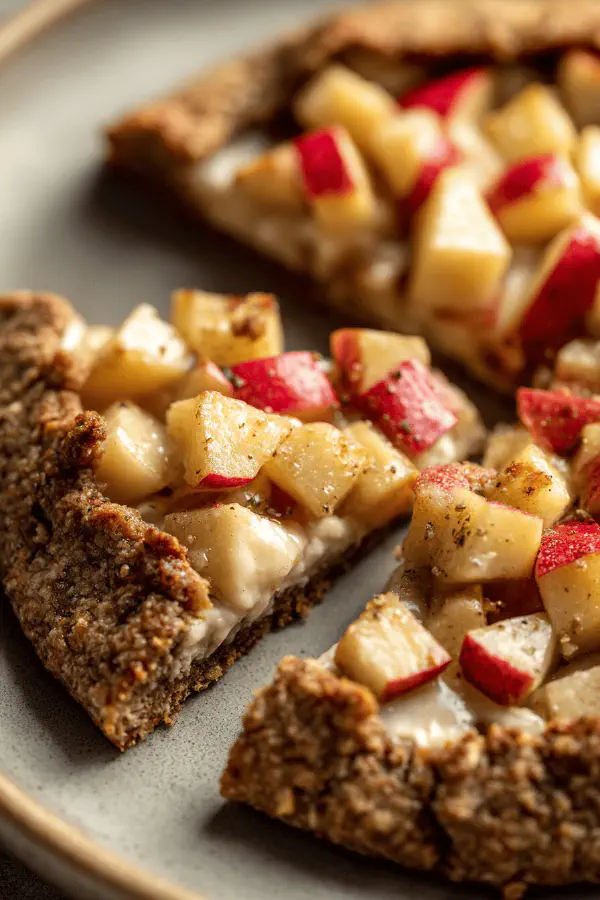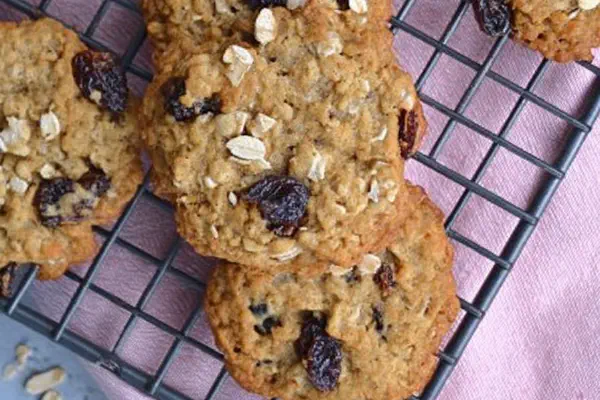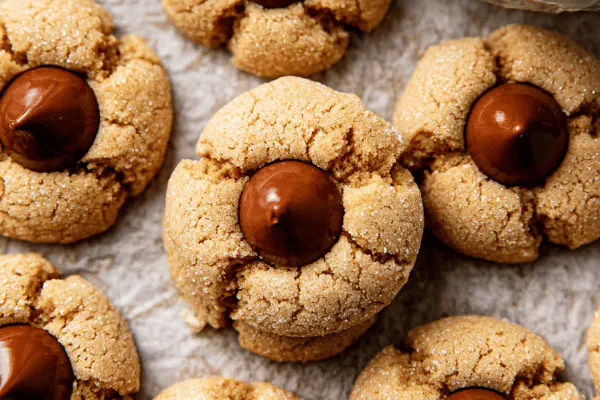Featured Recipe
Apple Almond Galettes

By Kate
"
Crunchy handheld galettes with diced apples and a nutty almond base. Uses rye and oat flours for depth. Cheese adds moisture and tang, balanced by maple syrup. Baked until golden edges and scent of warm spices fill the kitchen. Adaptable. Swap seeds for nuts or oil for butter if needed. Textures contrast between crumbly crust and tender fruit. Visual cues—edges browning, fruit caramelizing—guide doneness. A practical bake that teaches dough handling, layering moisture if dry. Tweakable, forgiving, satisfying for quick snacks or desserts.
"
Prep:
25 min
Cook:
35 min
Total:
60 min
Serves:
12 galettes
galette
apple
almond
baking
snack
Introduction
Don’t overthink it. Almonds and rye bring earthiness. Apples? Fresh, diced, softening to sweet pockets inside crumbly dough. Cream cheese keeps it moist, tangy—held together by eggs and oil, a delicate balance. Maple syrup swaps brown sugar for a less gritty sweetness that melts into crumb. Toasting almond flour or coconut amplifies background notes, no cheap shortcuts. Watch baking times, sights, smells—edges golden, kitchen warming, apples faintly spiced with cinnamon. Flavor layering starts with solid techniques, nothing wasted. You’ll learn rhythm in batter, trust hands. Chunky texture needs respect but is forgiving if mixed with care. Simple, seasonal, textured. A snack with bite. Good luck chasing golden edges. Resist turning oven door wildly. Patience yields. Crisp but tender. Crunch and softness—tradeoffs you’ll identify next bake.
Ingredients
About the ingredients
Swapping flours changes texture and flavor—rye adds bite and slight tang, oats soften crust. Ground almonds provide richness; toasting them boosts aroma but use fresh to avoid bitterness. Shredded coconut substitutes for nuts, offering chew and texture without allergy concerns. Maple syrup behaves differently than sugar—adds moisture and subtler sweetness, so reduce other liquids slightly if mixture feels too wet. Grapeseed or canola oil is best; olive oil introduces flavor shifts not always wanted here. Sure, butter could replace oil but affects baking time and dough texture—expect crumblier, richer galettes. Applesauce adds moisture and body; unsweetened is key to control sugar. Eggs must be room temperature to avoid curdling; cold eggs hinder emulsification. Vanilla and cinnamon are interchangeable with complementary spices if you prefer. Salt balances sweetness and intensifies flavors. Use fresh baking powder—old causes flat baked goods. Lots of fine balance but forgiving if attentive.
Method
Technique Tips
Mix dry ingredients first to evenly distribute leavening and spices; crucial for consistent rise. Creaming softened cream cheese with syrup before adding eggs ensures smooth batter—prevents lumpy pockets that don’t bake through. Add liquids slowly to avoid breaking emulsion; fold apples to avoid mashing them, retain texture. Portion batter smaller than expected—helps baking through without burning outside. Bake on middle racks for even heat; convection oven users reduce temp by 15°C. Early browning signals done edges; interior set confirmed by springy surface with slight give but no wet spots. Cool to let structure firm before touching, prevents crumbling. Store galettes airtight, room temperature for a day or refrigerate. Can freeze; thaw slowly. Expect softer crust with refrigeration. Don’t open oven door repeatedly—drops oven temp and disrupts baking. Practice makes timing second nature. Trust smell—warm spices, baked apple, nutty notes. Remember warmth finishes cooking residual heat post-oven. Use parchment for easy cleanup, monitors bottom so you get clean bake without burnt bottoms. It’s about balance. Simple isn’t basic without control.
Chef's Notes
- 💡 Remember to toast almond flour before mixing. It boosts flavor significantly. Coconut? Do it too. Adds complexity. Fresh grind flours work wonders.
- 💡 Using room temperature cream cheese? It mixes better, less lumps. Chunks ruin texture. Gradually add maple syrup, lets sweetness spread evenly.
- 💡 Eggs should be added one at a time; helps control batter structure. Pour oil slowly as you mix. Overbeating toughens dough. Keep it gentle.
- 💡 Watch baking closely. Edges should turn golden; tops? Springy not wet. Smells mean it’s close. Avoid opening oven door often—keeps heat steady.
- 💡 If dough feels sticky, add flour a little at a time. Too dry? A splash of applesauce or milk could save it. Be flexible.
Kitchen Wisdom
What if my galettes burn outside yet stay raw?
Reduce oven temp. Baking too hot causes uneven cooking. Always keep an eye.
Best way to store galettes?
Airtight container is key. Up to two days at room temp. Freeze longer. Thaw slowly; crust can soften.
Can I swap flours or oils?
Absolutely, be brave. Rye for spelt adds something interesting. Canola oil works in place of grapeseed.
How to keep filling from leaking?
Make sure to fold apples in gently. Not mashing keeps them whole. Better texture overall.



